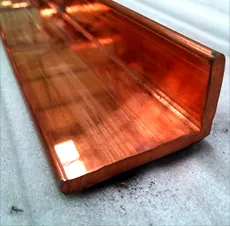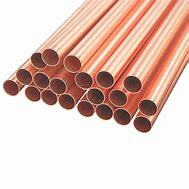1. Introduction
As of June 2024, global copper prices have surged past $9,800 per metric ton due to increased demand in renewable energy and EV infrastructure—making scrap copper more valuable than ever. If you’ve got old wiring, motors, or cables lying around, stripping copper wire properly can significantly boost your payout at recycling centers.

Stripping copper wire isn’t just about removing plastic—it’s about preserving the metal’s purity and weight. Burning insulation, for example, contaminates the copper and often violates environmental regulations. In this guide, we’ll show you the best way to strip copper wire safely, legally, and profitably.
2. Why Proper Stripping Matters
Recyclers pay top dollar for clean, bare bright copper—often called ‘stripped copper wire.’ Contaminated or burnt wire fetches far less. Plus, many scrap yards reject burned copper outright due to toxic fumes produced during combustion.
Whether you’re dealing with copper strip wire, thick industrial cables, or even copper strip roll remnants, clean stripping ensures you get the copper rod price equivalent for your scrap. And if you’re salvaging from HVAC systems, remember that aircon copper pipe and copper tubing also hold value—but that’s a separate process.
3. Tools You’ll Need
- Manual wire strippers (for small jobs)
- Automatic wire stripping machines (for bulk work)
- Utility knife (use with caution)
- Heat gun (optional, for stubborn insulation)
- Safety gloves and goggles
Avoid using open flames. Burning copper wire for scrap is dangerous, illegal in many areas, and reduces resale value. Stick to mechanical or thermal (non-combustion) methods.
4. Step-by-Step: Best Way to Strip Copper Wire
4.1. Sort Your Wire First

Separate types: THHN, Romex, coaxial, motor windings, etc. Different insulations require different approaches. Also, identify if you have copper strip near me sources like flat copper strips or beryllium copper strip—these may not need stripping at all.
4.2. Choose the Right Method
For thin wires (<10 AWG): Use manual strippers. Adjust the gauge setting to avoid nicking the copper.
For thick cables or long runs: Invest in an automatic stripper. These can handle hundreds of feet per hour and are ideal for stripping wire for recycling at scale.
For multi-conductor cables: Slit the outer jacket lengthwise with a utility knife, then pull it back to expose individual insulated strands. Strip each strand separately.
4.3. Avoid Common Mistakes
Don’t cut too deep—nicked copper loses structural integrity and may be downgraded by buyers.
Don’t mix copper with other metals. Even small amounts of aluminum or steel reduce your payout.
Never burn insulation off. It releases dioxins and leaves carbon residue that lowers copper purity.

5. What to Do With Stripped Copper
Once stripped, bundle your bare copper neatly. Most yards prefer coils or tied bundles under 50 lbs. Clean off any dirt or grease—clean copper = higher price.
If you have copper strip wire or flat copper strips (like 1mm copper strip or copper earth strip 25x3mm), keep them separate—they may qualify as ‘copper metal strips’ and fetch premium rates.
Also check if you have related items: copper round bar, copper bar, or even copper bonded ground rod pieces. These aren’t wire, but they’re still valuable scrap.
6. Current Market Tips
Copper rod price and copper strip price fluctuate daily. As of this week, bare bright copper is averaging $3.80–$4.20 per pound in the U.S., while insulated wire might only get $1.50.
If you’re near a city, search ‘copper strip near me’ or ‘copper bars for sale’ to compare local scrap yard rates. Some even buy copper clad steel ground rod or copper bonded earthing rod—though these contain less pure copper.
Note: Copper bonded steel and copper clad earth rod have a steel core, so they’re worth less than solid copper. Always verify material before assuming it’s pure.
7. Bonus: When Not to Strip
Sometimes stripping isn’t worth the effort. Very thin enamel-coated magnet wire (like from small motors) is often accepted ‘as-is’ by specialized recyclers. Similarly, copper tape for snails or copper edging strip may not need processing.
If labor outweighs potential gain—especially with short lengths or mixed alloys like nickel plated copper strip—it’s smarter to sell insulated and let professionals handle it.
8. Conclusion
Stripping copper wire for scrap is a simple yet impactful way to turn waste into cash—if done right. Focus on cleanliness, avoid burning, use the right tools, and stay updated on copper rod price trends. Whether you’re salvaging from old appliances, construction sites, or HVAC units (don’t forget those air conditioner copper pipe offcuts!), proper technique ensures you get the best return on your copper.
Our Website founded on October 17, 2012, is a high-tech enterprise committed to the research and development, production, processing, sales and technical services of ceramic relative materials such as How. Our products includes but not limited to Boron Carbide Ceramic Products, Boron Nitride Ceramic Products, Silicon Carbide Ceramic Products, Silicon Nitride Ceramic Products, Zirconium Dioxide Ceramic Products, etc. If you are interested, please feel free to contact us.

